Custom Software: Connect Your SaaS Tools
Stop juggling disconnected SaaS tools. Custom software development creates seamless integrations. Save 20+ hours weekly.

Table of Contents
- Introduction: The SaaS Integration Crisis
- The SaaS Trap: When Tools Become Obstacles
- Understanding Modern Custom Development
- Integration vs Struggle: True Cost Analysis
- 5 Signs You Need Custom Development
- The Development Process Demystified
- Choosing Your Development Partner
- Real Success Story: FitLife's Transformation
- Common Integration Pitfalls
- ROI Calculator: Making Your Business Case
- Technology Stack Guide
- Next Steps: Your Integration Roadmap
Introduction: The SaaS Integration Crisis
Attention: You're drowning in a sea of SaaS subscriptions that refuse to talk to each other.
Problem: The average Southeast Asian SME uses 12-15 different SaaS tools (Blissfully Report 2024). Your team spends 20+ hours weekly just moving data between platforms.
Promise: Custom software development in 2025 isn't about building from scratch - it's about creating intelligent bridges between your existing tools, automating workflows, and reclaiming your team's time.
Benefit: Learn exactly how to transform your disconnected SaaS chaos into a unified, efficient system that saves you $40,000+ annually while boosting productivity by 300%.

Key Takeaway Box:
The Bottom Line: Modern custom software development focuses on integration, not replacement. For $10,000-$20,000, you can connect all your SaaS tools and save 20+ hours of manual work every week.
The SaaS Trap: When Tools Become Obstacles

Let's face an uncomfortable truth: SaaS has become both a blessing and a curse for Southeast Asian SMEs.
The Hidden Cost of SaaS Sprawl
According to Productiv's 2024 SaaS Management Report:
- Average SME SaaS Stack:
- 12-15 active subscriptions
- $25,000-$50,000 annual spend
- 40% of licenses underutilized
- 3.2 hours daily on manual data transfer
Real Problems, Real Companies
Case 1: E-commerce Nightmare "TechStyle," a fashion retailer in Bangkok:
- Shopify for online store
- NetSuite for inventory
- Mailchimp for email
- Zendesk for support
- QuickBooks for accounting
- Monday.com for projects
Daily Reality:
- 2 hours copying orders between systems
- Inventory mismatches causing oversells
- Customer data inconsistencies
- Financial reconciliation nightmares
- Team frustration at peak levels
Case 2: Service Business Chaos "CloudConsult," a digital agency in Manila:
- HubSpot for CRM
- Asana for projects
- Harvest for time tracking
- Stripe for payments
- Xero for accounting
- Slack for communication
Pain Points:
- Project profitability invisible
- Client data scattered
- Invoicing takes days
- No unified reporting
- Scaling impossible
The Southeast Asian Amplification Effect
Regional factors make SaaS sprawl worse:
-
Payment Fragmentation
- Global SaaS often lacks local payment support
- Need separate tools for GCash, PayNow, DANA
- Manual reconciliation multiplies
-
Compliance Complexity
- Different tax requirements per country
- Local reporting standards
- Multiple tools for compliance
-
Language Barriers
- Limited local language support
- Need separate tools for different markets
- Translation management chaos
-
Infrastructure Limitations
- Slower internet affects cloud tools
- Need offline capabilities
- Data residency requirements
Understanding Modern Custom Development

Custom Software Development in 2025: A New Paradigm
Forget everything you think you know about custom software. Modern custom development is fundamentally different:
Old Way (2015):
- Build everything from scratch
- Replace existing systems
- 12-18 month projects
- $100,000+ budgets
- High risk, high complexity
New Way (2025):
- Connect existing tools
- Enhance, don't replace
- 4-8 week projects
- $10,000-$30,000 budgets
- Low risk, high impact
What Modern Custom Development Actually Does
1. API Integration Layer
Think of APIs as doors between your SaaS tools. Custom development creates hallways connecting these doors:
Your SaaS Tools: [Shopify] [Xero] [Mailchimp] [Inventory]
| | | |
Custom Layer: [------- Integration Hub --------]
|
Your Business: [Unified Dashboard]
Real Example: When order placed in Shopify → Automatically:
- Creates invoice in Xero
- Updates inventory system
- Adds customer to Mailchimp
- Notifies fulfillment team
- Updates analytics dashboard
2. Workflow Automation
Beyond simple connections, custom development creates intelligent workflows:
Before: 37 manual steps from order to fulfillment After: 3 automated workflows with human checkpoints
Example Workflow: New Customer Onboarding
- Customer signs up on website
- Automated by custom software:
- Create CRM contact
- Send welcome email series
- Assign to sales rep
- Create project in PM tool
- Set up billing profile
- Schedule onboarding call
- Generate analytics event
3. Unified Data Layer
Your data lives in silos. Custom development creates a single source of truth:
Benefits:
- Real-time business metrics
- Accurate reporting
- Better decision making
- Predictive analytics
- Compliance ready
4. Custom Business Logic
SaaS tools are generic. Your business is unique. Custom development bridges the gap:
Examples:
- Custom pricing rules
- Regional tax calculations
- Approval workflows
- Commission structures
- Inventory algorithms
The Technology Behind Modern Integration
Integration Platforms:
- Zapier/Make: No-code automation
- n8n: Self-hosted workflows
- Pipedream: Developer-friendly automation
- Custom APIs: Maximum flexibility
Modern Tech Stack:
- Languages: Node.js, Python, Go
- Frameworks: Express, FastAPI, Gin
- Databases: PostgreSQL, MongoDB
- Queue Systems: Redis, RabbitMQ
- Deployment: Docker, Kubernetes
Integration vs Struggle: True Cost Analysis

The Real Math: Hidden Costs of Manual Processes
Let's analyze actual costs using data from 50+ Southeast Asian SMEs:
Scenario Analysis: Medium-Sized E-commerce Business
Company Profile:
- 20 employees
- $2M annual revenue
- 500 orders/month
- 5 core SaaS tools
Option 1: Continue Manual Processes
| Activity | Time/Month | Cost/Hour | Monthly Cost |
|---|---|---|---|
| Data Entry Between Systems | 60 hours | $20 | $1,200 |
| Report Generation | 20 hours | $30 | $600 |
| Error Correction | 15 hours | $25 | $375 |
| Customer Data Updates | 25 hours | $20 | $500 |
| Inventory Reconciliation | 30 hours | $25 | $750 |
| Total Manual Labor | 150 hours | - | $3,425 |
Additional Hidden Costs:
- Lost sales from stockouts: $2,000/month
- Customer churn from errors: $1,500/month
- Delayed decisions: $2,000/month (opportunity cost)
- Employee turnover: $1,000/month (amortized)
- Total Hidden Costs: $6,500/month
Total Cost of Manual Processes: $9,925/month = $119,100/year
Option 2: Custom Integration Solution
One-Time Investment:
- Discovery & Planning: $2,000
- Integration Development: $12,000
- Testing & Deployment: $2,000
- Training & Documentation: $1,000
- Total Investment: $17,000
Ongoing Costs:
- Maintenance: $500/month
- Tool upgrades: $200/month
- Total Ongoing: $700/month = $8,400/year
3-Year Comparison:
- Manual Processes: $357,300
- Custom Integration: $42,200
- Savings: $315,100 (88% reduction)
ROI Timeline

Month-by-Month ROI:
- Month 1-2: -$17,000 (investment)
- Month 3: +$9,225 saved
- Month 4: +$18,450 total saved
- Month 2: Break-even
- Month 12: +$102,300 ROI
- Year 3: +$315,100 ROI
Industry-Specific Cost Analysis
SaaS Integration Costs by Industry
E-commerce:
- Average manual cost: $8,000-$12,000/month
- Integration investment: $15,000-$25,000
- Payback period: 2-3 months
Professional Services:
- Average manual cost: $5,000-$8,000/month
- Integration investment: $10,000-$20,000
- Payback period: 2-4 months
Manufacturing/Distribution:
- Average manual cost: $10,000-$15,000/month
- Integration investment: $20,000-$35,000
- Payback period: 2-3 months
Healthcare/Clinics:
- Average manual cost: $6,000-$10,000/month
- Integration investment: $15,000-$30,000
- Payback period: 3-5 months
5 Signs You Need Custom Development
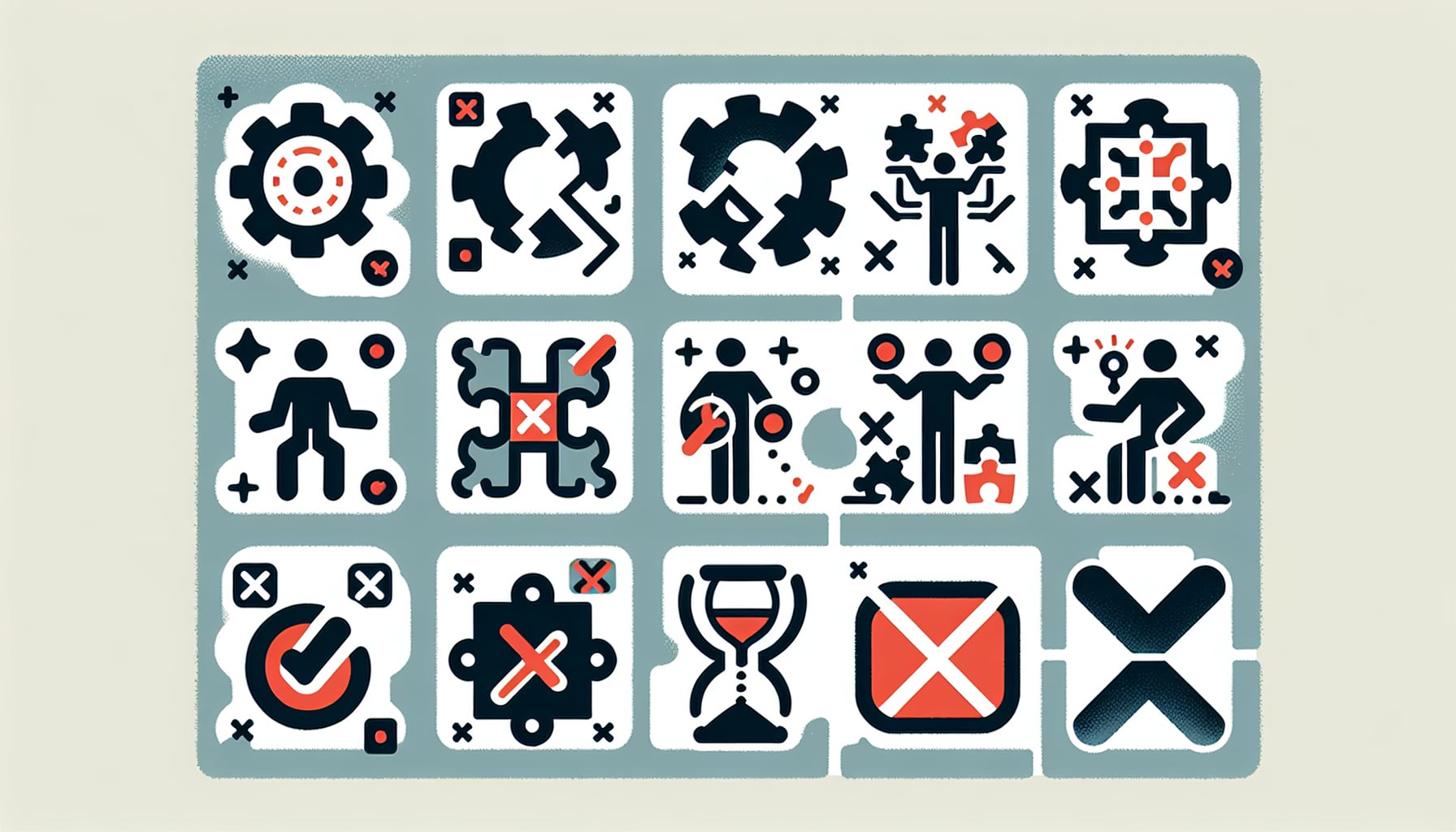
Sign 1: Your Team Has Become Human APIs
Symptoms:
- Staff spend 30%+ of time on data entry
- "Copy-paste" is most used function
- Multiple screens open constantly
- Repetitive strain injuries increasing
Real Example: Sarah at "FashionForward" (Jakarta):
- Morning: Export Shopify orders to Excel
- 10 AM: Import to inventory system
- 11 AM: Update QuickBooks manually
- Noon: Copy customer data to Mailchimp
- 2 PM: Generate reports combining all data
- 4 PM: Fix discrepancies found
- 6 PM: Still working, frustrated
The Solution: Custom integration eliminates 90% of manual work. Sarah now focuses on customer relationships and strategy instead of data entry.
Sign 2: The Spreadsheet of Truth
Symptoms:
- Master Excel file is your "real" database
- Daily/weekly data consolidation rituals
- Version control nightmares (Final_Final_v3.xlsx)
- Formulas breaking constantly
Case Study: "LogiFlow" Shipping Company
- 7 different SaaS tools
- 1 master spreadsheet updated hourly
- 3 people maintaining it full-time
- 15% error rate in data
After Integration:
- Real-time unified dashboard
- Zero manual consolidation
- 100% data accuracy
- 3 people redeployed to growth initiatives
Sign 3: Customer Data Conflicts
Warning Signs:
- Different email addresses in different systems
- Purchase history incomplete
- Support can't see full customer context
- Marketing sending to outdated lists
Impact Metrics:
- 23% of customers receive wrong communications
- 15% increase in support tickets
- 30% decrease in email engagement
- Lost upsell opportunities: $50K/month
Sign 4: "We Can't Do That Because..."
Common Blockers:
- "Our systems don't talk to each other"
- "That data lives in a different tool"
- "We'd have to manually update everything"
- "It would take weeks to generate that report"
Lost Opportunities:
- Can't offer real-time inventory
- Can't automate customer workflows
- Can't provide unified reporting
- Can't scale operations efficiently
Sign 5: Local Market Friction
Southeast Asian Specific Issues:
- Payment gateways not supported
- Address formats incompatible
- Tax calculations manual
- Compliance reports handcrafted
Example: Multi-Country Operations
- Singapore: PayNow integration needed
- Malaysia: SST tax calculations
- Indonesia: e-Faktur compliance
- Philippines: BIR reporting
Each Requiring:
- Separate tools
- Manual processes
- Compliance risks
- Scaling barriers
Self-Assessment Checklist
Rate each item 1-5 (1=Never, 5=Always):
- We copy data between systems daily
- Reports require data from multiple tools
- Customer data differs across platforms
- We maintain "master" spreadsheets
- Local requirements need workarounds
- Staff complain about repetitive tasks
- Errors occur from manual processes
- Growth is limited by manual workflows
- We say "no" due to system limitations
- Integration is our biggest pain point
Score Interpretation:
- 40-50: Critical need for custom development
- 30-39: Strong candidate for integration
- 20-29: Growing need, plan for future
- Below 20: Current tools may suffice
The Development Process Demystified
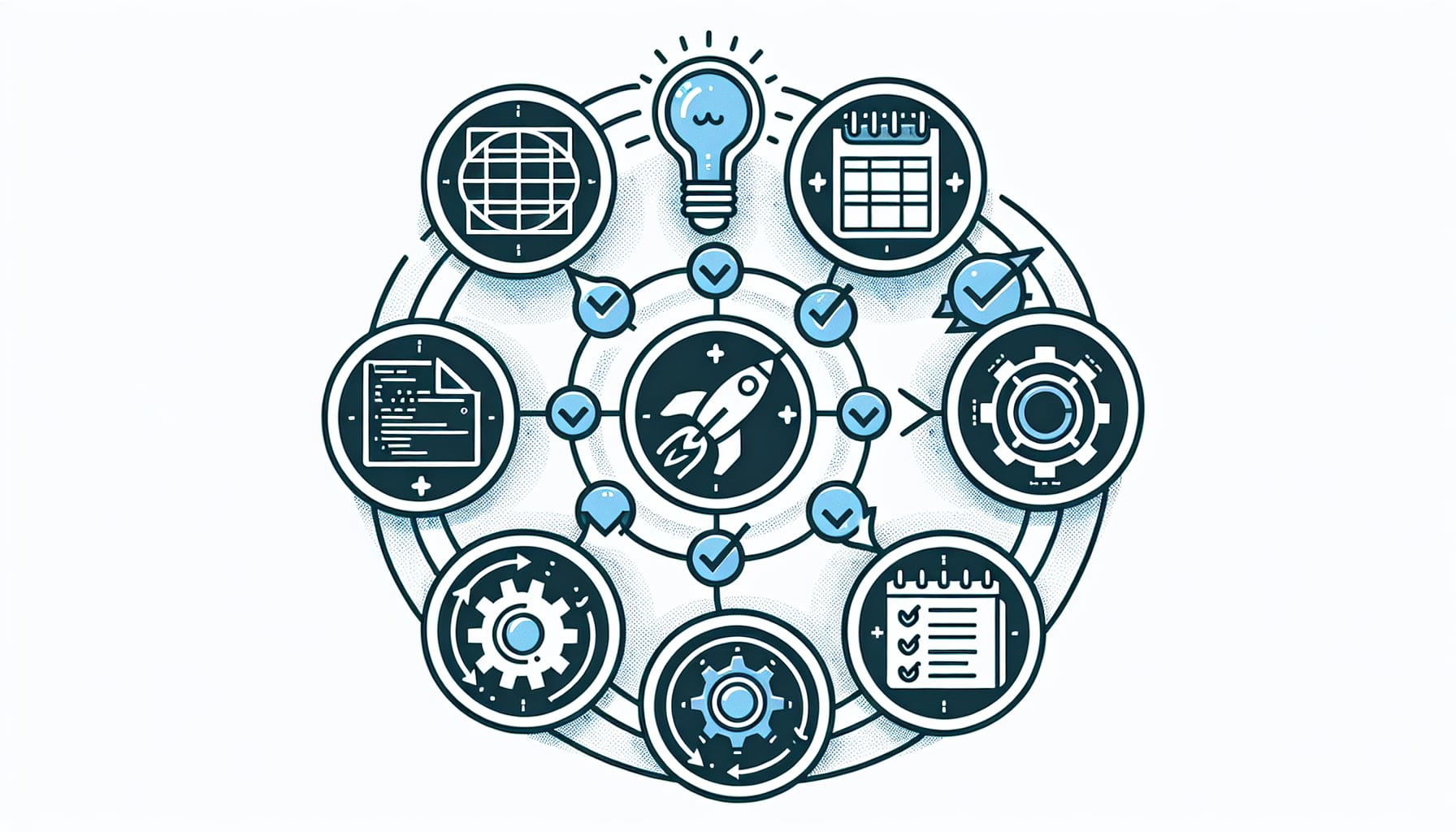
Modern Integration Development: Week by Week
Week 1: Discovery & Mapping
Day 1-2: Current State Analysis
- Document existing tools and subscriptions
- Map current workflows (we literally watch you work)
- Identify pain points and bottlenecks
- Calculate time spent on manual tasks
Day 3-4: Data Flow Documentation
- Track data journey across systems
- Identify redundancies and conflicts
- Document business rules
- Find automation opportunities
Day 5: Stakeholder Alignment
- Present findings
- Prioritize integration points
- Define success metrics
- Set project boundaries
Deliverables:
- Current state workflow diagram
- Pain point heat map
- Integration opportunity matrix
- Project charter
Week 2: Technical Architecture
API Assessment:
- Test each tool's API capabilities
- Document rate limits
- Identify authentication methods
- Plan for edge cases
Architecture Design:
- Design integration patterns
- Plan data synchronization strategy
- Create error handling approach
- Design monitoring system
Example Architecture:
[SaaS Tools Layer]
↓ APIs ↓
[Integration middleware]
↓ Logic ↓
[Business Rules Engine]
↓ Data ↓
[Unified Database]
↓ UI ↓
[Custom Dashboards]
Week 3-4: Core Development
Integration Building:
- Set up authentication
- Build data mappers
- Create sync engines
- Implement business logic
Real Development Timeline:
- Shopify ↔ Xero: 2 days
- CRM ↔ Email: 1 day
- All tools → Dashboard: 3 days
- Testing & refinement: 4 days
Week 5: Testing & Refinement
Testing Phases:
- Unit Testing: Each integration separately
- Integration Testing: Full workflow tests
- User Testing: Real team members
- Load Testing: Full volume simulation
- Error Testing: Failure scenarios
Common Issues Found:
- Rate limit handling
- Timezone differences
- Currency conversions
- Data format mismatches
Week 6: Deployment & Training
Gradual Rollout:
- Day 1: Deploy to staging
- Day 2-3: Pilot with power users
- Day 4: Gradual team rollout
- Day 5: Full deployment
Training Components:
- Video walkthroughs
- Written documentation
- Hands-on sessions
- Q&A support
Agile Integration Approach
2-Week Sprints After Initial Build:
Sprint Planning:
- Review integration performance
- Gather user feedback
- Prioritize improvements
- Plan new connections
Sprint Execution:
- Daily standups (15 min)
- Continuous deployment
- User feedback loops
- Performance monitoring
Sprint Review:
- Demo new features
- Measure against KPIs
- Adjust roadmap
- Plan next sprint
Choosing Your Development Partner
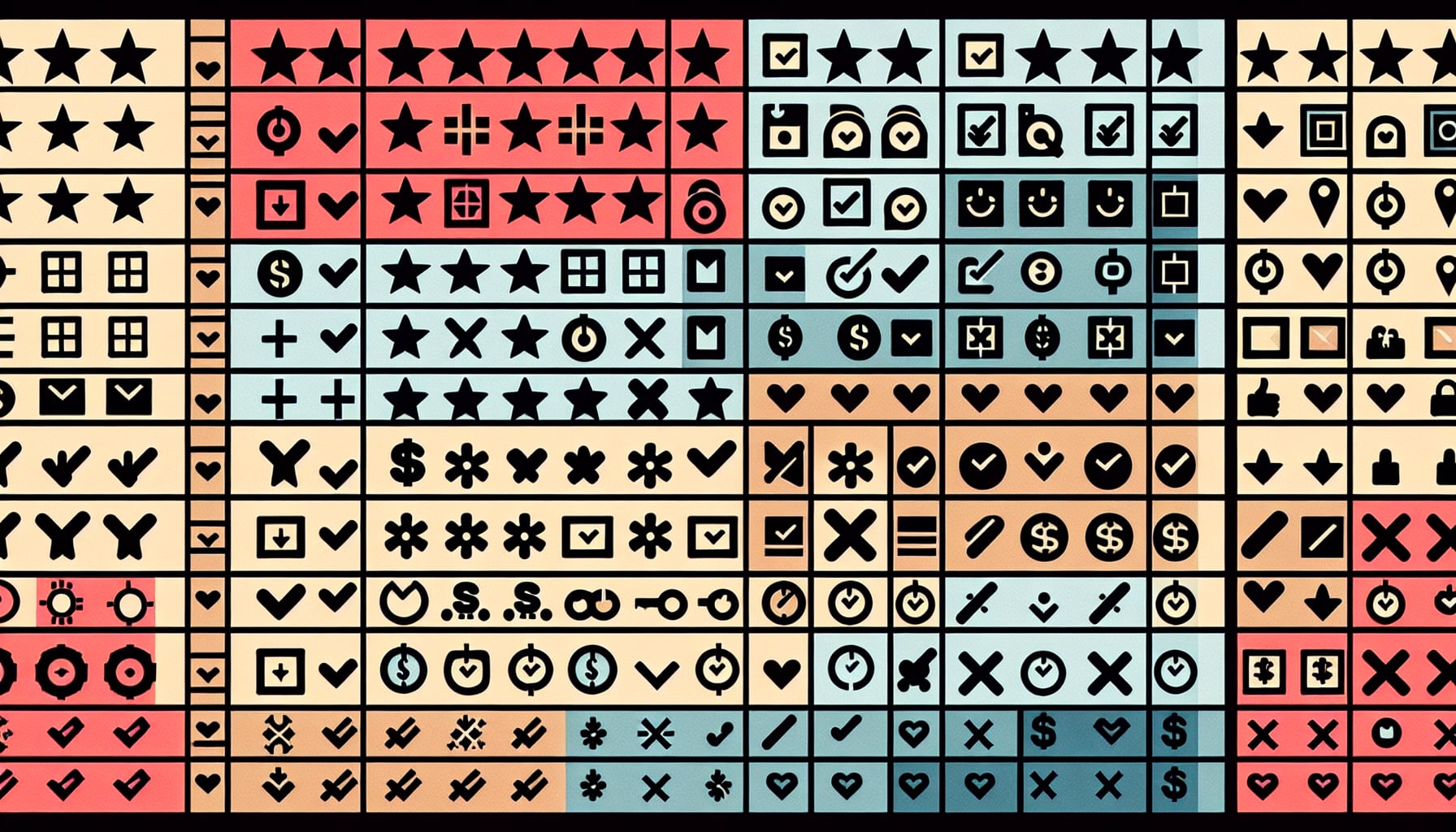
Partner Evaluation Framework
Option 1: Regional Integration Specialists
Pros:
- Deep SaaS knowledge
- Pre-built connectors
- Fast implementation
- Ongoing support
Cons:
- Higher initial cost
- Less customization
- Vendor lock-in risk
Best For:
- Standard SaaS stacks
- Quick implementation needs
- Limited technical resources
Cost Range: $15,000-$30,000
Option 2: Local Development Agencies
Pros:
- Cultural understanding
- Local support
- Competitive pricing
- Face-to-face meetings
Cons:
- Varying expertise
- Limited scale
- Resource constraints
Best For:
- Complex local requirements
- Ongoing relationship needs
- Budget constraints
Cost Range: $10,000-$25,000
Option 3: Freelance Teams
Pros:
- Lowest cost
- Flexible engagement
- Specific expertise
- Quick start
Cons:
- Management overhead
- Quality variance
- Limited accountability
- No long-term support
Best For:
- Well-defined projects
- Technical leadership available
- Budget priority
Cost Range: $5,000-$15,000
Option 4: Hybrid Approach
Structure:
- Agency for architecture
- Freelancers for development
- Internal for maintenance
Benefits:
- Best of all worlds
- Cost optimization
- Risk mitigation
- Knowledge transfer
Due Diligence Checklist
Technical Evaluation:
- API integration experience
- Similar project portfolio
- Technology stack alignment
- Security certifications
- Performance track record
Business Evaluation:
- Client references
- Financial stability
- Support structure
- Communication process
- Contract terms
Red Flags to Avoid:
- No API experience
- Only website projects
- No maintenance plans
- Unclear pricing
- Poor communication
Interview Questions for Partners
-
"Show us similar integrations you've built"
- Look for: Specific examples, technical depth
-
"How do you handle API rate limits?"
- Look for: Queuing strategies, retry logic
-
"What's your testing approach?"
- Look for: Automated testing, staging environments
-
"How do you ensure data consistency?"
- Look for: Transaction handling, error recovery
-
"What monitoring do you implement?"
- Look for: Proactive alerts, dashboards
Real Success Story: FitLife's Transformation
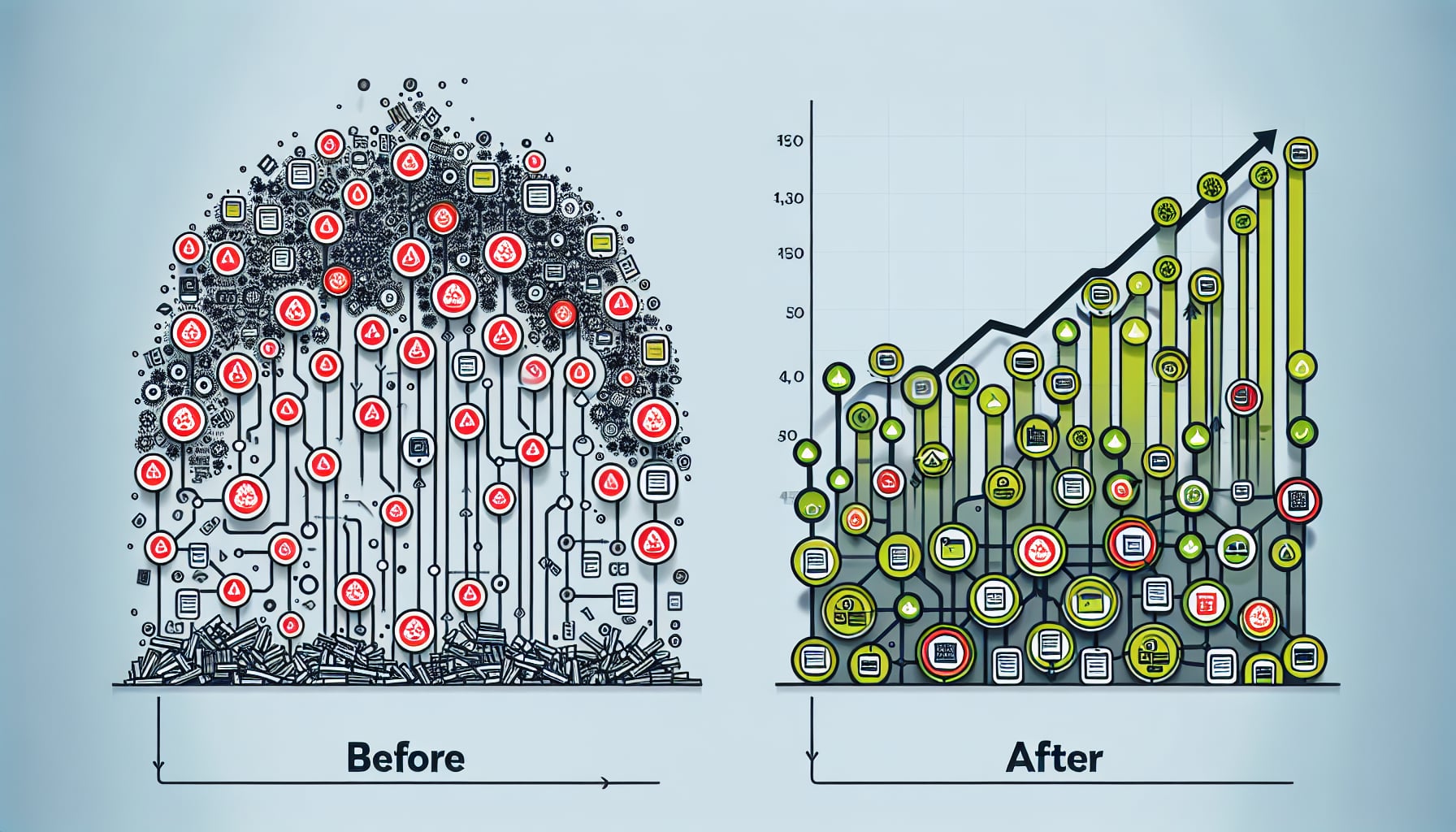
Background: The Perfect SaaS Storm
Company: FitLife Fitness Centers Locations: 5 centers across Singapore and Malaysia Founded: 2019 Problem: Drowning in disconnected systems
The Challenge: Death by a Thousand Apps
Their SaaS Stack:
- MindBody - Class scheduling, member management
- HubSpot - Sales CRM, lead tracking
- Mailchimp - Email marketing
- ActiveCampaign - Marketing automation
- WhatsApp Business - Member communication
- Slack - Team coordination
- Stripe - Online payments
- Local POS - In-gym purchases
- Google Analytics - Website tracking
- Excel - Financial reporting
- QuickBooks - Accounting
- Zoom - Virtual classes
Monthly SaaS Cost: $2,500
The Pain Points
Daily Operations Nightmare:
- 6 AM: Export yesterday's attendance from MindBody
- 7 AM: Update member lists in Mailchimp
- 8 AM: Sync new leads to HubSpot
- 9 AM: Reconcile payments across systems
- 10 AM: Update class schedules everywhere
- 2 PM: Generate reports from 5 tools
- 4 PM: Fix data mismatches
- 6 PM: Still catching up
Real Impacts:
- 3 full-time staff just managing data
- 15-minute wait times for new members
- 20% of emails to wrong segments
- No real-time business visibility
- Expansion plans on hold
The Solution: Smart Integration Layer
Phase 1: Discovery (Week 1)
Findings:
- 156 manual tasks per day
- 23% data error rate
- 40 hours/week on data management
- $8,000/month in hidden costs
Phase 2: Architecture Design (Week 2)
Created unified system:
Member Journey:
Signup → MindBody → HubSpot → Mailchimp → WhatsApp
↓ ↓ ↓ ↓ ↓
[Custom Integration Hub - Real-time Sync]
↓ ↓ ↓ ↓ ↓
Unified Dashboard | Automated Workflows | Analytics
Phase 3: Build Core Integrations (Weeks 3-4)
Priority integrations:
- MindBody ↔ HubSpot sync
- Payment unification (Stripe + POS)
- Automated email segmentation
- WhatsApp notification system
- Unified member dashboard
Phase 4: Extended Features (Weeks 5-6)
Advanced automation:
- Class reminder sequences
- Membership renewal workflows
- Instructor schedule optimization
- Financial reconciliation
- Predictive analytics
The Technical Implementation
Integration Architecture:
- Core: Node.js microservices
- Queue: Redis for job processing
- Database: PostgreSQL for unified data
- APIs: RESTful + webhooks
- Monitoring: Datadog + custom alerts
Key Automations Built:
-
New Member Onboarding
- Trigger: MindBody signup
- Actions: Create HubSpot contact, add to welcome campaign, send WhatsApp confirmation, schedule intro class, notify trainer
-
Class Capacity Management
- Monitor real-time bookings
- Auto-waitlist management
- Dynamic instructor allocation
- Member notifications
-
Payment Reconciliation
- Unified payment dashboard
- Automatic categorization
- Failed payment workflows
- Financial reporting
The Results
Immediate Impact (Month 1):
- Staff time saved: 120 hours
- Data accuracy: 99.9%
- Member satisfaction: +32%
- Operational cost: -40%
Growth Enabled (Months 2-6):
- Opened 2 new locations
- Launched virtual class platform
- Increased member retention 25%
- Revenue growth: 45%
Long-term Benefits (Year 1):
- ROI: 400%
- Expansion to 8 locations
- Staff productivity: +300%
- Technology cost: -20% (optimized subscriptions)
Key Success Factors
-
Phased Approach
- Started with biggest pain points
- Quick wins built momentum
- Gradual feature addition
-
User-Centric Design
- Shadowed staff daily routines
- Built for actual workflows
- Continuous feedback loops
-
Future-Proof Architecture
- Scalable design
- Easy to add new tools
- API-first approach
-
Change Management
- Involved team from day 1
- Celebrated efficiency gains
- Provided thorough training
Lessons Learned
What Worked:
- Starting with integration, not replacement
- Focus on time-saving automations
- Building trust through quick wins
- Measuring everything
What We'd Do Differently:
- More user training upfront
- Better error handling initially
- Earlier performance optimization
- More comprehensive documentation
Quote from CEO:
"We thought we needed to replace all our tools. Instead, custom integration made them work together perfectly. It's like we hired 5 extra staff members for the price of 2 months' salaries."
Common Integration Pitfalls

Pitfall 1: Underestimating Complexity
The Trap: "It's just connecting APIs, how hard can it be?"
Reality Check:
- APIs have rate limits
- Data formats vary wildly
- Error handling is crucial
- Performance matters
Solution:
- Proper discovery phase
- Experienced developers
- Realistic timelines
- Buffer for unknowns
Pitfall 2: Over-Engineering
The Trap: Building for imaginary future needs
Common Mistakes:
- Complex abstraction layers
- Unnecessary microservices
- Premature optimization
- Feature creep
Solution:
- Start simple
- Iterate based on use
- YAGNI principle
- Regular reviews
Pitfall 3: Ignoring Data Quality
The Trap: Garbage in, garbage out - but faster
Issues Created:
- Duplicate records multiply
- Errors propagate quickly
- Trust erodes
- Cleanup becomes massive
Solution:
- Data validation rules
- Deduplication logic
- Regular audits
- User alerts
Pitfall 4: Poor Error Handling
The Trap: Assuming happy path only
When Things Break:
- Silent failures
- Data loss
- Cascading errors
- User frustration
Solution:
- Comprehensive logging
- Retry mechanisms
- Fallback procedures
- User notifications
Pitfall 5: Security Afterthought
The Trap: Security added last minute
Risks:
- Data breaches
- Compliance violations
- Reputation damage
- Legal liability
Solution:
- Security-first design
- Regular audits
- Encryption everywhere
- Access controls
Southeast Asia Specific Pitfalls
1. Assuming Stable Internet
- Build offline capabilities
- Queue for retry
- Local caching
2. Ignoring Local Compliance
- Data residency laws
- Tax requirements
- Industry regulations
3. Language Simplification
- Support local languages
- Handle character sets
- Cultural adaptations
4. Payment Complexity
- Multiple gateway support
- Currency handling
- Tax calculations
ROI Calculator: Making Your Business Case
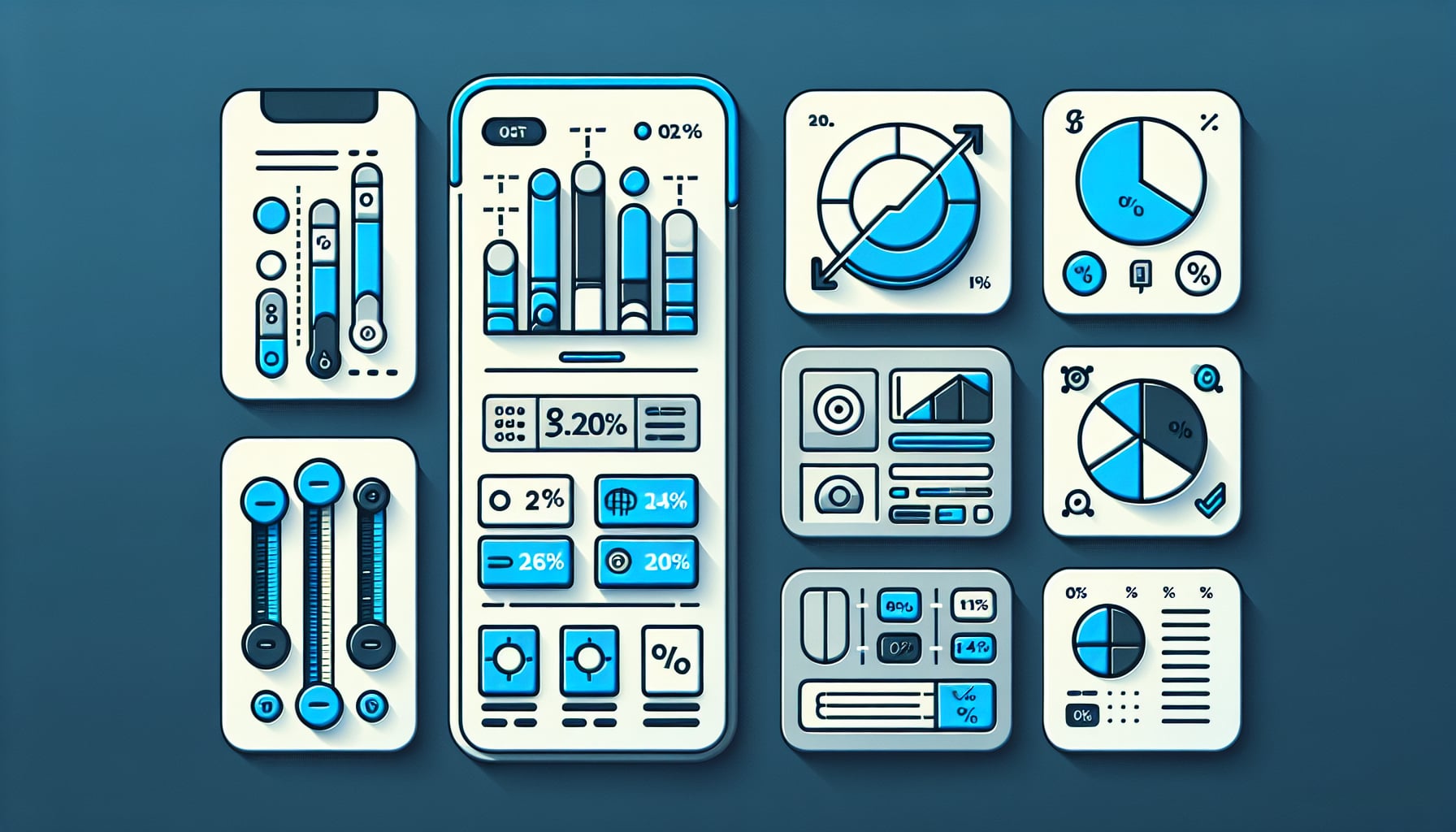
Build Your Business Case: Step by Step
Step 1: Calculate Current Costs
Labor Costs:
Manual Tasks Inventory:
- Data entry hours/week: ___ × hourly rate = $___
- Report generation: ___ × hourly rate = $___
- Error correction: ___ × hourly rate = $___
- System maintenance: ___ × hourly rate = $___
Total Weekly Labor Cost = $___
Monthly Labor Cost = $___ × 4.3 = $___
Opportunity Costs:
- Delayed decisions: $___/month
- Lost sales (stockouts): $___/month
- Customer churn: $___/month
- Cannot scale: $___/month
Total Opportunity Cost = $___/month
Error Costs:
- Wrong shipments: $___/month
- Billing errors: $___/month
- Compliance fines: $___/month
- Reputation damage: $___/month
Total Error Cost = $___/month
Total Current Cost = $___/month
Step 2: Estimate Integration Investment
Development Costs:
- Discovery & Planning: $2,000-$3,000
- Core Integration: $8,000-$15,000
- Testing & Deployment: $2,000-$3,000
- Training & Docs: $1,000-$2,000 Total One-Time: $13,000-$23,000
Ongoing Costs:
- Maintenance: $300-$500/month
- Enhancements: $200-$300/month Total Monthly: $500-$800
Step 3: Calculate ROI
Monthly Savings:
- Current Cost: $___
- New Cost: $___
- Monthly Savings: $___
Payback Period:
- Investment ÷ Monthly Savings = ___ months
3-Year ROI:
- Total Savings: $___ × 36 months
- Total Investment: $___
- Net ROI: $___
- ROI Percentage: ___%
Real ROI Examples
E-commerce Company (100 orders/day):
- Current Cost: $12,000/month
- Integration Cost: $22,000
- Monthly Savings: $10,500
- Payback: 2.1 months
- 3-Year ROI: 1,436%
Service Company (50 employees):
- Current Cost: $8,000/month
- Integration Cost: $18,000
- Monthly Savings: $6,800
- Payback: 2.6 months
- 3-Year ROI: 1,260%
Clinic Chain (5 locations):
- Current Cost: $15,000/month
- Integration Cost: $28,000
- Monthly Savings: $12,500
- Payback: 2.2 months
- 3-Year ROI: 1,407%
ROI Multipliers
Direct Benefits (Measurable):
- Labor reduction: 70-90%
- Error reduction: 95%+
- Processing speed: 10x
- Reporting time: 90% faster
Indirect Benefits (Valuable):
- Employee satisfaction ↑
- Customer experience ↑
- Decision speed ↑
- Scalability unlocked
- Competitive advantage
Making the CFO Case
Key Metrics CFOs Love:
- Payback Period: Usually 2-4 months
- IRR: Typically 200%+ annually
- NPV: Strongly positive
- Risk: Low (keeping existing tools)
Comparison Framework:
| Option | 3-Year Cost | Risk | Scalability |
|---|---|---|---|
| Status Quo | $400,000+ | Medium | Limited |
| New SaaS Platform | $200,000+ | High | Limited |
| Custom Integration | $50,000 | Low | Unlimited |
Technology Stack Guide
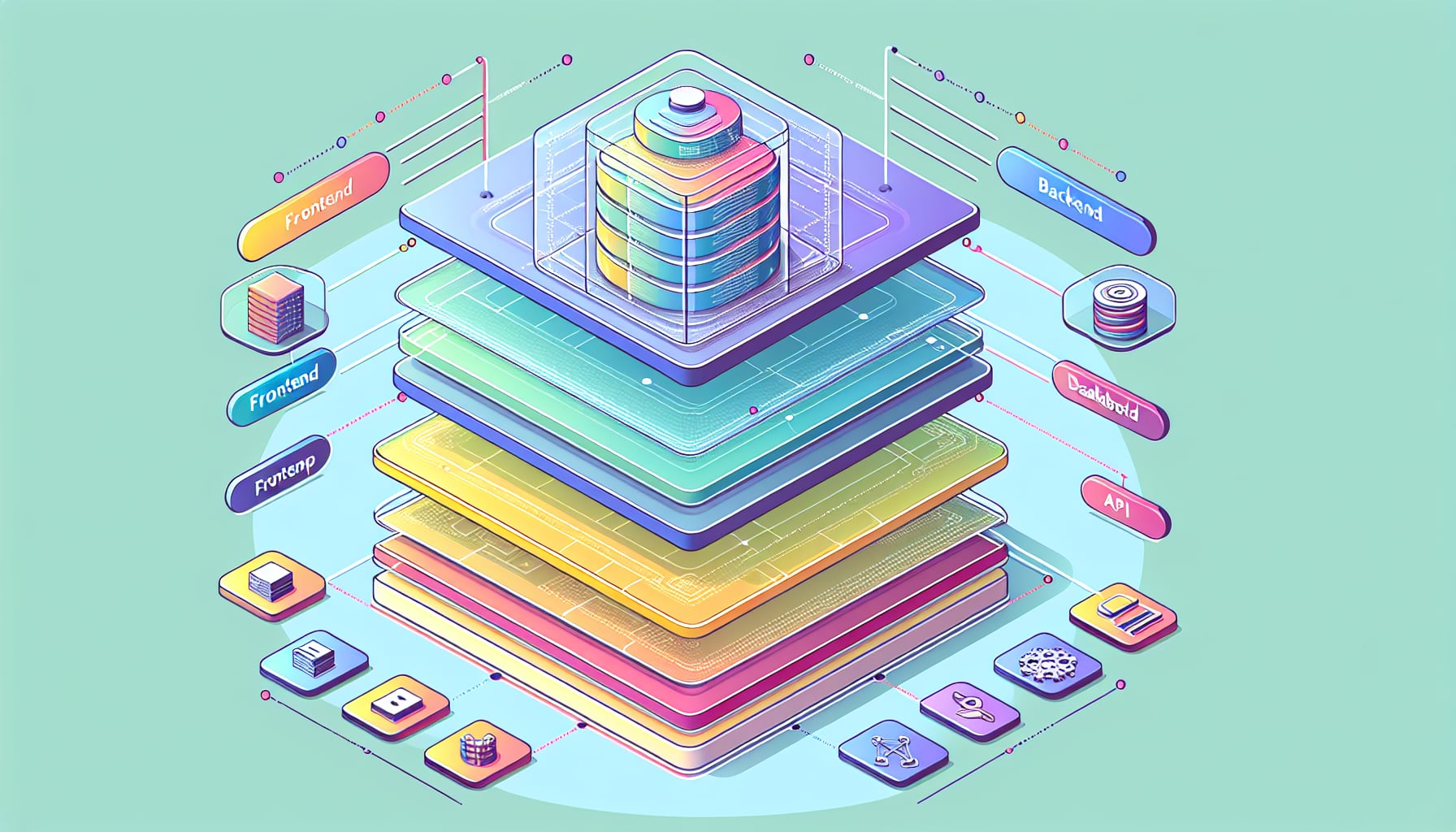
2025 Integration Tech Stack
Core Languages & Frameworks
Backend Development:
-
Node.js + TypeScript
- Pros: JavaScript everywhere, huge ecosystem
- Cons: Performance limitations
- Best for: Rapid development, API integration
-
Python + FastAPI
- Pros: Data processing power, ML capabilities
- Cons: Deployment complexity
- Best for: Data-heavy integrations
-
Go
- Pros: Performance, concurrency
- Cons: Smaller ecosystem
- Best for: High-performance requirements
Frontend (Dashboards):
-
React + Next.js
- Server-side rendering
- Great performance
- SEO friendly
-
Vue.js + Nuxt
- Easier learning curve
- Great documentation
- Smaller bundle size
Integration Platforms
Low-Code Options:
-
n8n
- Self-hosted
- Visual workflow builder
- 200+ integrations
- Cost: Free (self-hosted)
-
Zapier Platform
- Cloud-based
- 5,000+ app integrations
- No coding required
- Cost: $20-$600/month
Developer Platforms:
-
Temporal
- Workflow orchestration
- Failure handling
- Long-running processes
-
Apache Airflow
- DAG-based workflows
- Extensive monitoring
- Battle-tested
Databases & Storage
Primary Databases:
-
PostgreSQL
- ACID compliance
- JSON support
- Full-text search
- Best for: Structured data
-
MongoDB
- Flexible schema
- Horizontal scaling
- Document store
- Best for: Varied data
Caching & Queues:
-
Redis
- In-memory cache
- Message queue
- Pub/sub support
-
RabbitMQ
- Message broker
- Reliable delivery
- Complex routing
Monitoring & Observability
Application Monitoring:
-
Datadog
- Full-stack monitoring
- Custom dashboards
- Alert management
- Cost: $15+/host/month
-
New Relic
- APM focused
- Real user monitoring
- AI-powered insights
- Cost: $25+/user/month
Open Source Options:
- Prometheus + Grafana
- Self-hosted
- Highly customizable
- Free
- Requires expertise
Security & Compliance
Essential Security Tools:
-
OAuth 2.0 / JWT
- Standard authentication
- Token-based security
-
HashiCorp Vault
- Secrets management
- Dynamic credentials
- Encryption as a service
-
OWASP ZAP
- Security testing
- Vulnerability scanning
- Free & open source
Deployment & Infrastructure
Container Orchestration:
-
Docker + Kubernetes
- Industry standard
- Scalable
- Complex but powerful
-
Docker + ECS/Fargate
- AWS managed
- Simpler than K8s
- Pay per use
Serverless Options:
-
AWS Lambda
- Event-driven
- Auto-scaling
- Pay per execution
-
Vercel Functions
- Edge computing
- Global deployment
- Developer friendly
Southeast Asia Specific Tools
Payment Integrations:
- Xendit (Regional)
- Stripe (Global + Regional)
- 2C2P (Thailand focus)
- PayMongo (Philippines)
- Midtrans (Indonesia)
Communication:
- WhatsApp Business API
- LINE Messaging API
- Viber for Business
- Telegram Bot API
Logistics:
- Ninjavan API
- J&T Express API
- Lalamove API
- GrabExpress API
Next Steps: Your Integration Roadmap
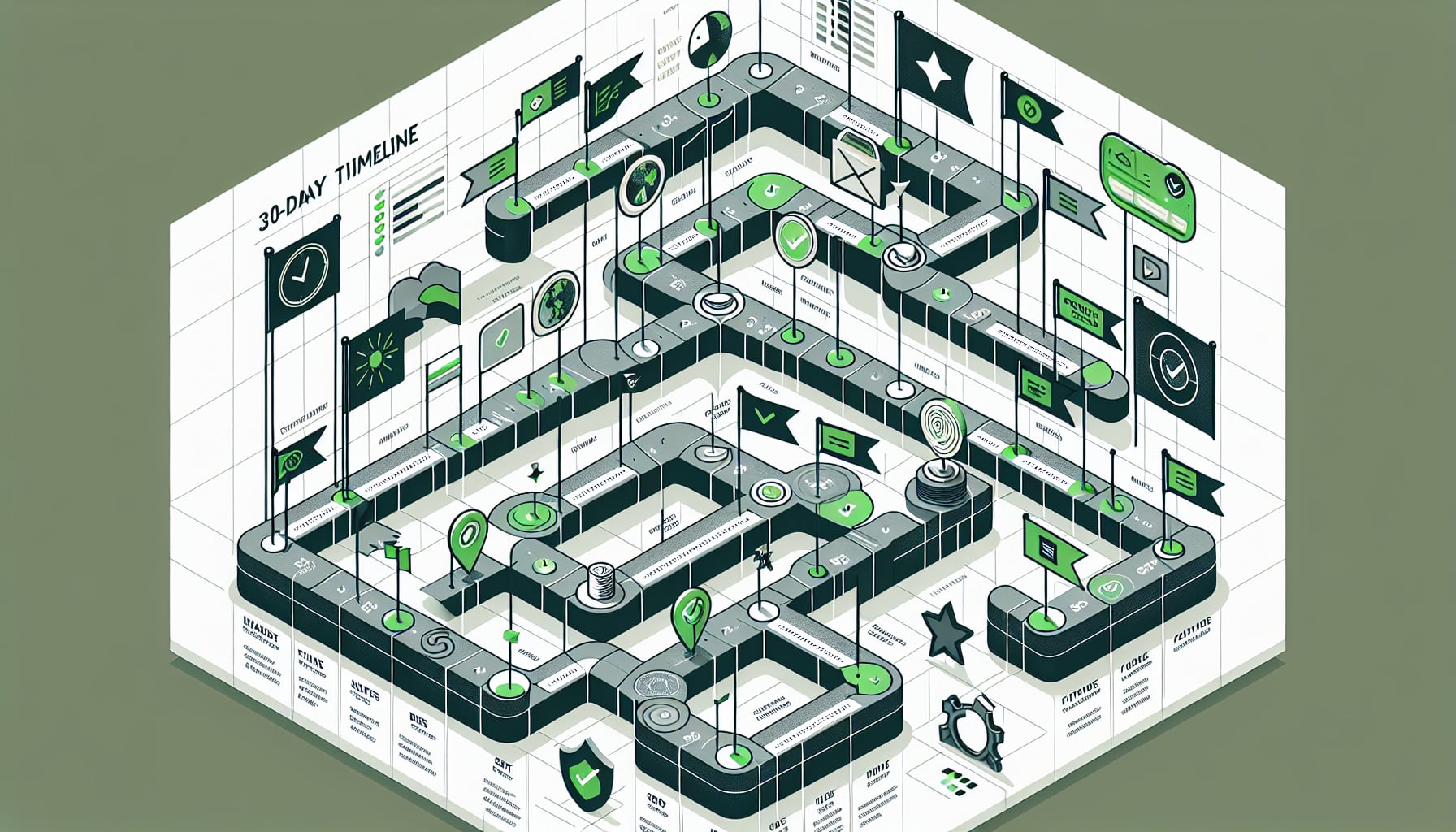
Your 30-Day Action Plan
Week 1: Assessment & Planning
Day 1-2: SaaS Audit
- List all SaaS subscriptions
- Document monthly costs
- Identify unused licenses
- Map critical workflows
Day 3-4: Pain Point Analysis
- Time tracking on manual tasks
- Error log compilation
- Team frustration survey
- Customer complaint analysis
Day 5: Calculate Current Costs
- Use ROI calculator above
- Document hidden costs
- Project 12-month impact
- Build business case
Week 2: Solution Design
Day 8-9: Integration Mapping
- Identify top 3 pain points
- Map ideal workflows
- Define success metrics
- Create project scope
Day 10-11: Technical Assessment
- Check API availability
- Document data formats
- Identify security needs
- Plan phase approach
Day 12: Vendor Selection
- Research 3-5 partners
- Request proposals
- Check references
- Compare approaches
Week 3: Partner Evaluation
Day 15-17: Vendor Interviews
- Technical deep dives
- Review past projects
- Discuss timelines
- Negotiate terms
Day 18-19: Decision Making
- Score each vendor
- Check final references
- Review contracts
- Make selection
Week 4: Project Kickoff
Day 22-23: Onboarding
- Sign contracts
- Share documentation
- Schedule kickoff
- Assign team members
Day 24-26: Discovery Phase
- Detailed workflow mapping
- Technical architecture
- Project planning
- Communication setup
Day 27-30: Development Start
- Environment setup
- First integration build
- Initial testing
- Feedback loops
Quick Wins to Start Today
-
Audit Your SaaS Stack
- Log into each tool
- Check usage statistics
- Identify redundancies
- Calculate total cost
-
Track Manual Time
- Have team log activities
- Use simple spreadsheet
- One week minimum
- Calculate hourly cost
-
Map One Critical Workflow
- Choose biggest pain point
- Document every step
- Identify automation spots
- Calculate potential savings
-
Talk to Your Team
- What frustrates them most?
- Which tasks feel pointless?
- What would they automate?
- How much time would save?
Resources & Tools
Free Assessment Tools:
- SaaS Spend Calculator
- Integration Readiness Checklist
- ROI Calculator Template
- Vendor Evaluation Matrix
Learning Resources:
Community Support:
- Southeast Asia CTO Club
- SaaS Integration Forum
- Regional Tech Meetups
- Online Communities
Common Questions Answered
Q: Will this disrupt our operations? A: No. Modern integration is additive - your tools keep running while we build connections. Deployment is gradual with no downtime.
Q: What if our SaaS tools change? A: Good integration architecture is modular. When tools change, we update connectors without rebuilding everything.
Q: How do we maintain this? A: Most integrations need minimal maintenance. Budget 2-4 hours monthly for monitoring and minor updates.
Q: What about security? A: Modern integration uses same security as your SaaS tools - OAuth, encryption, audit logs. Often more secure than manual processes.
Q: Can we start small? A: Absolutely. Start with one painful workflow. Prove ROI. Then expand. Most clients begin with 2-3 integrations.
Take Action Today
The gap between companies that thrive and those that struggle increasingly comes down to operational efficiency. While your competitors waste hours on manual tasks, you could be focusing on growth.
Remember:
- Every day delayed costs money
- Integration gets complex as you grow
- Early movers gain competitive advantage
- ROI typically exceeds 1,000%
Your Next Step:
Stop letting disconnected tools hold your business hostage. Whether you're just building your MVP or ready to automate your accounting, custom integration is the key to scaling efficiently.
- This Week: Complete the SaaS audit
- Next Week: Calculate your ROI
- This Month: Start your first integration
The tools exist. The technology is proven. The ROI is clear.
The only question is: How much longer will you wait?
Start your integration journey today. Your future self will thank you.
Last updated: June 23, 2025
Based on real integration projects across Southeast Asia. Results vary based on tool complexity and implementation quality.
Ready to Transform Your Business?
Let's discuss how AI can revolutionize your operations
Book a Free Consultation
